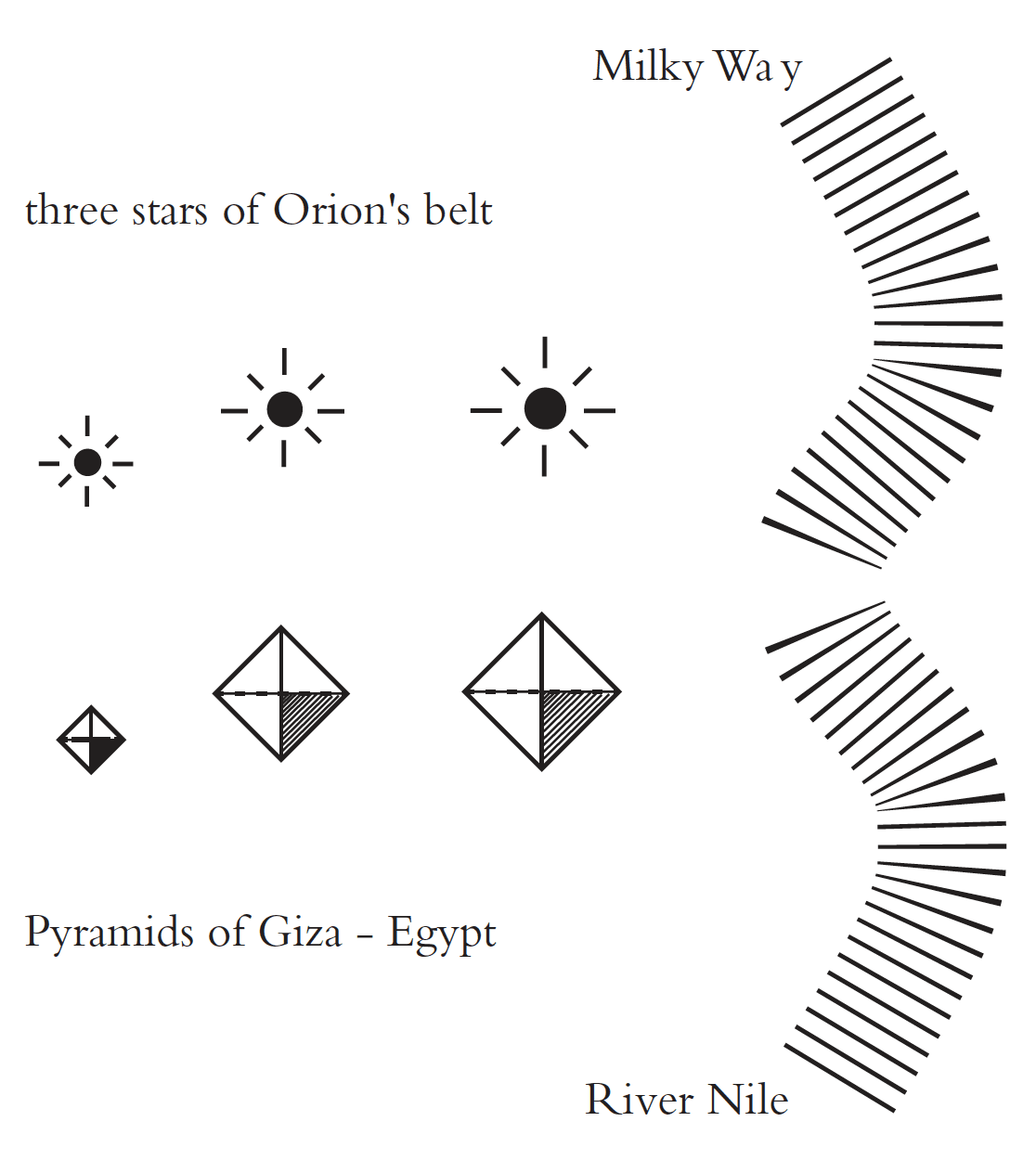Seven Wonders – 2018
It was back in 2008 that the first edition of Seven Wonders – Suffolk’s Ancient Sites: a Vision of an Arcane Landscape was published. Here we are ten years later, so why the need for an update?
There were many reasons behind the need for an updated version, one example was the story behind an image to support the Star Ground Correlation Theory from Egypt. Many years after publication, I discovered an amazing European equivalent (published as a Phd thesis) to underpin the concept, when considering some of the ancient earthworks and woodlands featured, one of these being on the highest point in Suffolk.
 More importantly, in 2016, the Orion Correlation Theory discovered by Bauval & Gilbert (1994) was scientifically validated in a peer reviewed journal, Archaeological Discovery by Orofino, V. and Bernardini, P (2016, 4, 1-10) confirming the mathematical claims that the pyramids at the Giza plateau beside the River Nile mirror the stars in the constellation of Orion’s Belt and the Milky Way.
More importantly, in 2016, the Orion Correlation Theory discovered by Bauval & Gilbert (1994) was scientifically validated in a peer reviewed journal, Archaeological Discovery by Orofino, V. and Bernardini, P (2016, 4, 1-10) confirming the mathematical claims that the pyramids at the Giza plateau beside the River Nile mirror the stars in the constellation of Orion’s Belt and the Milky Way.
Whilst some still prefer instead to align themselves with Andrew Collins and his compelling work on the constellation of Cygnus. Collins proposes that the pyramids at Giza were designed to mirror the setting primary wing stars of the swan in the constellation of Cygnus, and not Orion. These ‘sky ground correlation’ examples relate to a country that lies between the African and Asian continents, therefore if an interesting and strong example arose from a European context, this would be far more preferable.
As noted above, I discovered such an example from the Netherlands (published as a Phd thesis in 2004) and it was only whilst researching A Ritual Landscape Considered: Cosmography and Anglo Saxon Ship Burials that I came across it in 2014, ten years after was it was published, and six years after Seven Wonders was completed. Since this time, I have been fortunate enough to be in regular correspondence with Dr Linda Therkorn, senior researcher in the Faculty of Humanities, Archaeology at the University of Amsterdam.
Therkorn documented a landscape of the sky dating from between 600 B.C. – 350 A.D. and found that settlement formations revealed deposits in burial pits that related large scale patterns, forming shapes that represented the stars, creating recognizable patterns of the constellations.
Throughout the 69 shallow and deep pits that were excavated, it was found that over centuries, inhabitants maintained a designated ritual practice and long standing tradition of depositing leaves, wood, twigs, pots, rope, bundles of bones, animals and humans.
Analysis of the pits revealed that the deposits had a direct symbolic association, by that, I mean that they represented and mirrored their celestial counterpart on the ground i.e. a horse’s hoof / foot / bone, buried to mark the hoof of the constellation Horse / Pegasus or part of a cows skull, buried in the spot to represent the head of the constellation Taurus.
A second reason was the need to recognise the importance of Göbekli Tepe, an archaeological site in the Southeastern Anatolia Region of Turkey that houses at least twenty stone temples and arguably the worlds oldest megaliths, known to date 6,000 years older than Stonehenge. German archaeologist Klaus Schmidt led a team between 1995 until his death in 2014 unearthing T-shaped pillars up to 6m (20 ft) in height, weighing as much as 20 tons. Fitted into sockets hewn out of the bedrock, the site was abandoned and deliberately buried in 7370 B.C. having been in use since 9130 B.C. and is the oldest living architectural temple discovered that clearly demonstrates a sophisticated preoccupation with the stars.
Each time a geometrical form is produced, an expression of the universal oneness is made. It is at once unique in time and place and also timeless and transcendent, representing the particular and the universal.
– Nigel Pennick
